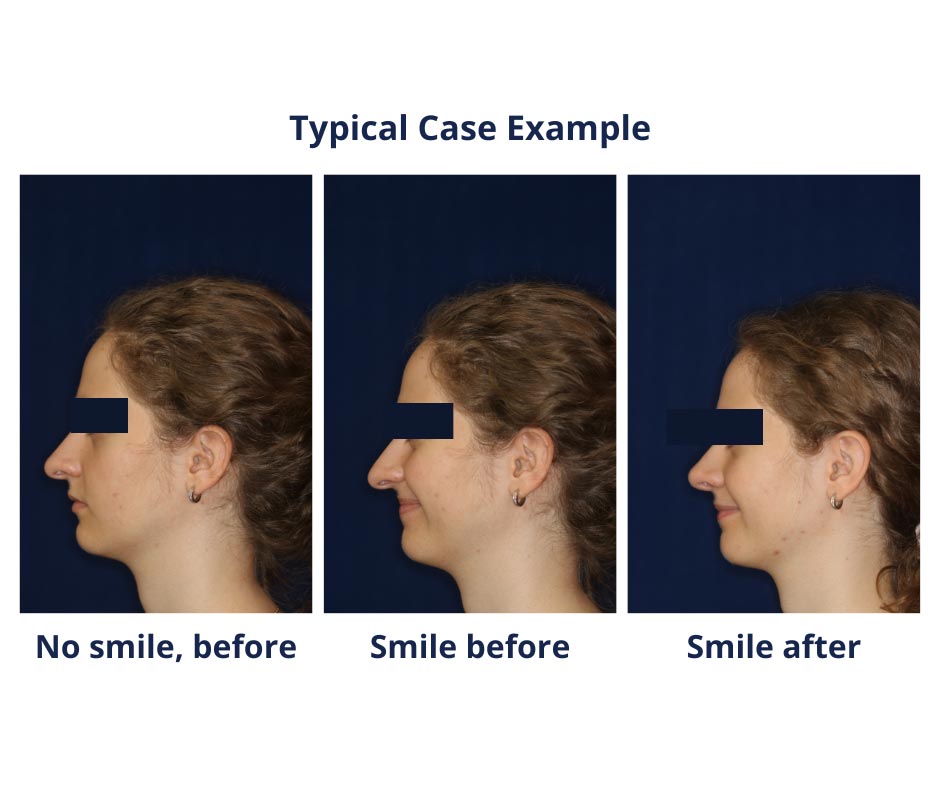Let us help you analyze the imperfections.
Below are the most common nose imperfections for which patients seek improvement. Your nose may have some, but not necessarily all. Let this be your guide to understanding how each imperfect area of the nose can be improved. Below are the 5 most common.
1. Bump or Hump:
Peak-like in the mid-portion of the nose. May be from injury or heredity. The most common imperfection.
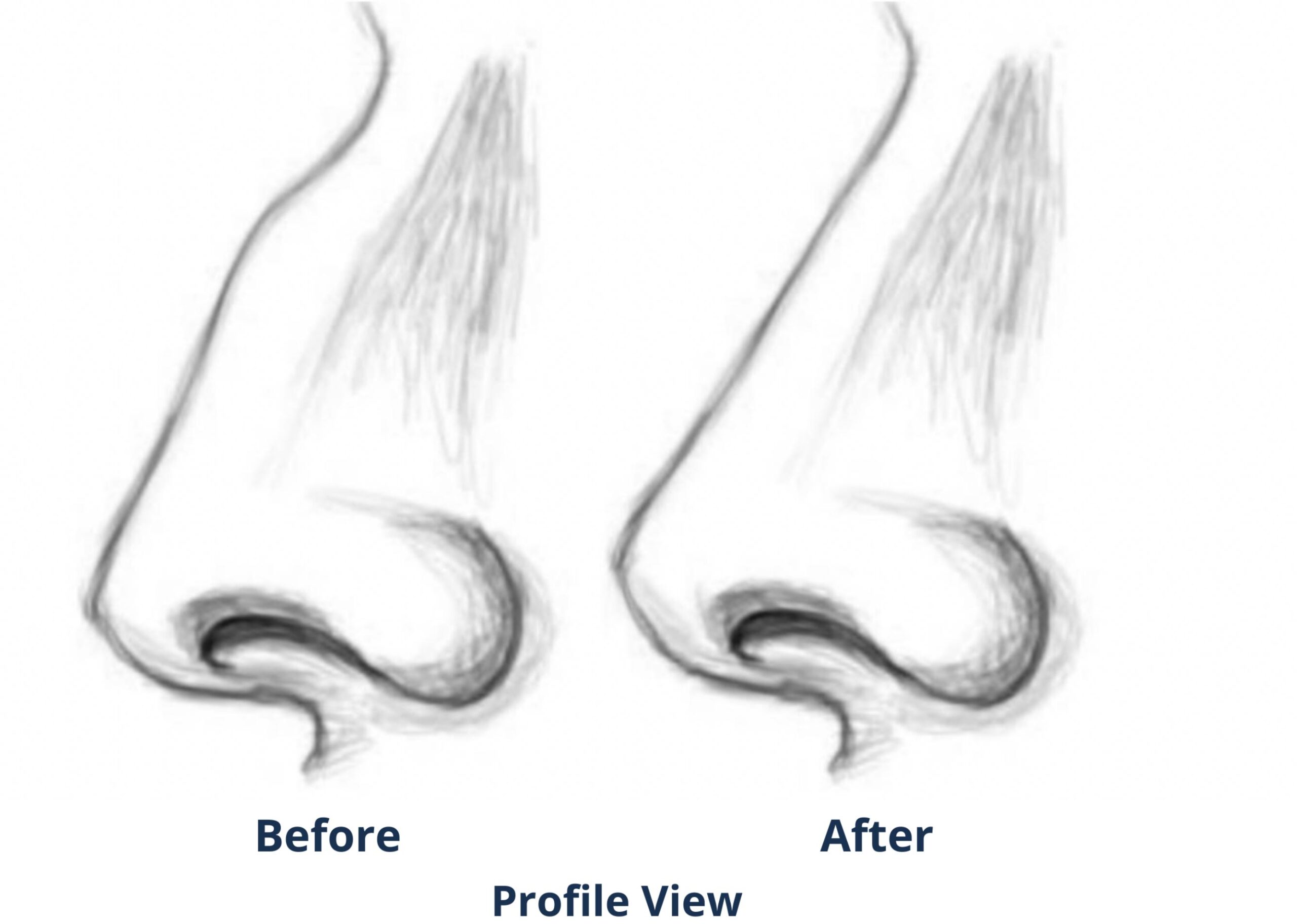
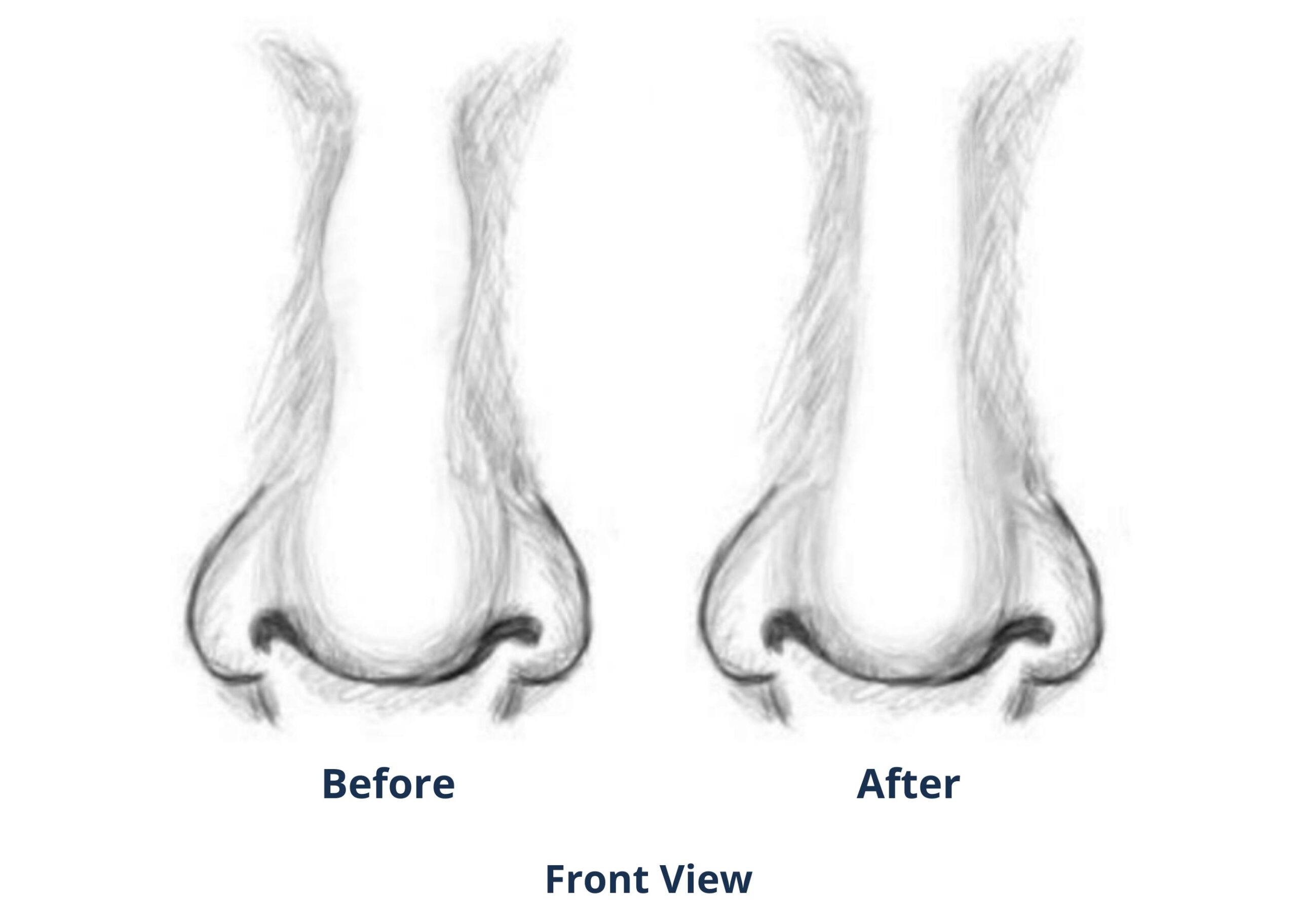
Correction of Bump or Hump on Bridge
It is done through internal hidden incisions (closed rhinoplasty technique), the skin over the entire bone cartilage skeleton/framework is raised and the bump is filed down using miniature filing tools. After the bump has been filed down to create an even, straight bridge, the outer walls are re-positioned towards each other after a miniature chisel cracks the bone to allow movement of the bones towards each other to restore the normal anatomical relationship.
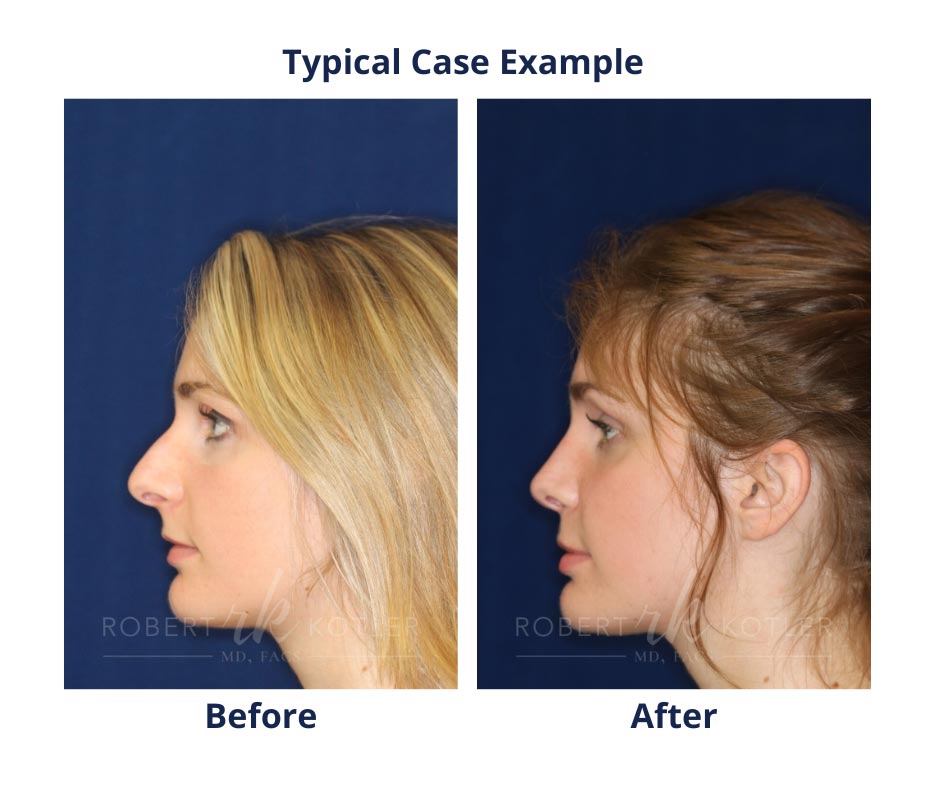
2. Bulbous Tip:
A round, spherical, ball-like tip of front-most portion of the nose.
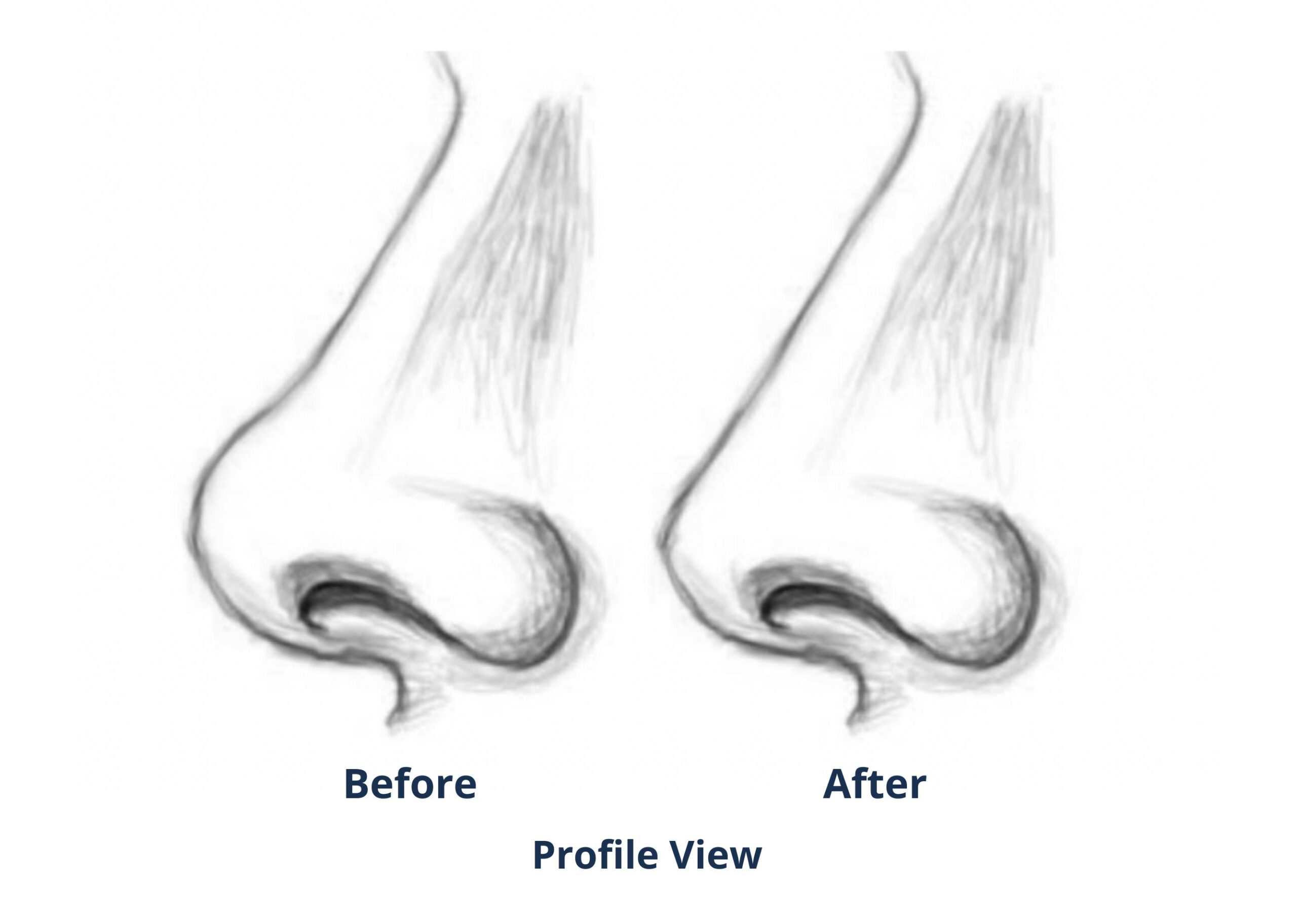
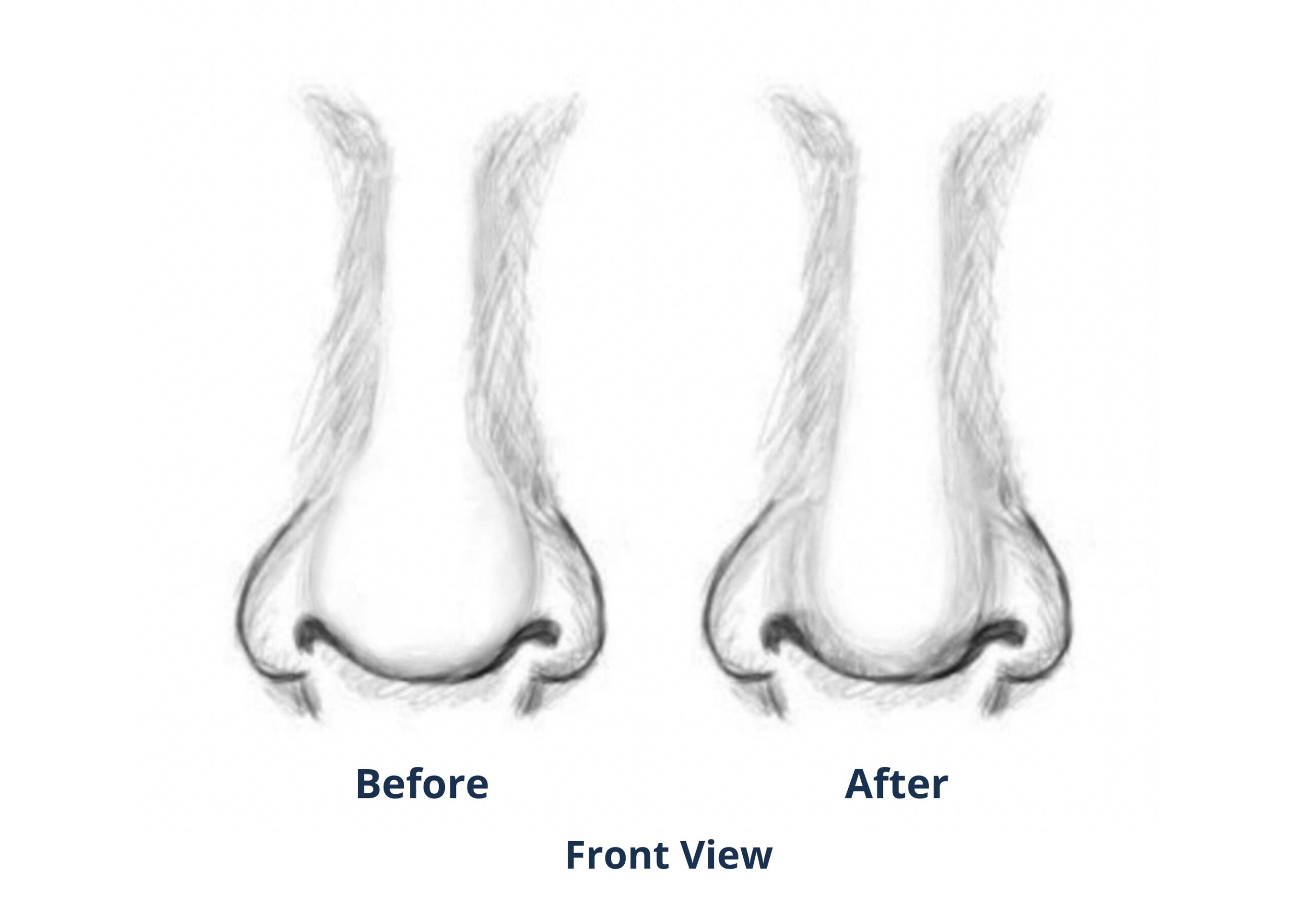
Correction of a Bulbous Tip
Via hidden internal incisions, the bulbous tip cartilages, are reduced in volume by sculpture. The overlying skin contracts to properly cover the now-smaller tip.
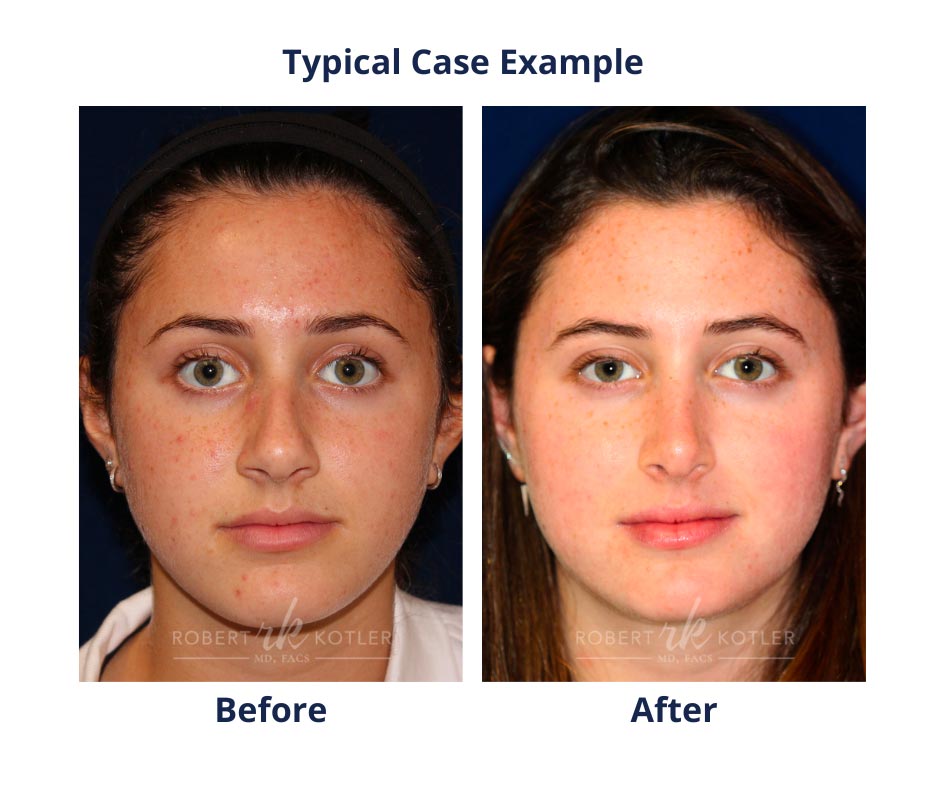
3. Droopy Tip
The tip of the nose hangs down and may be unsatisfactorily too close to the upper lip.
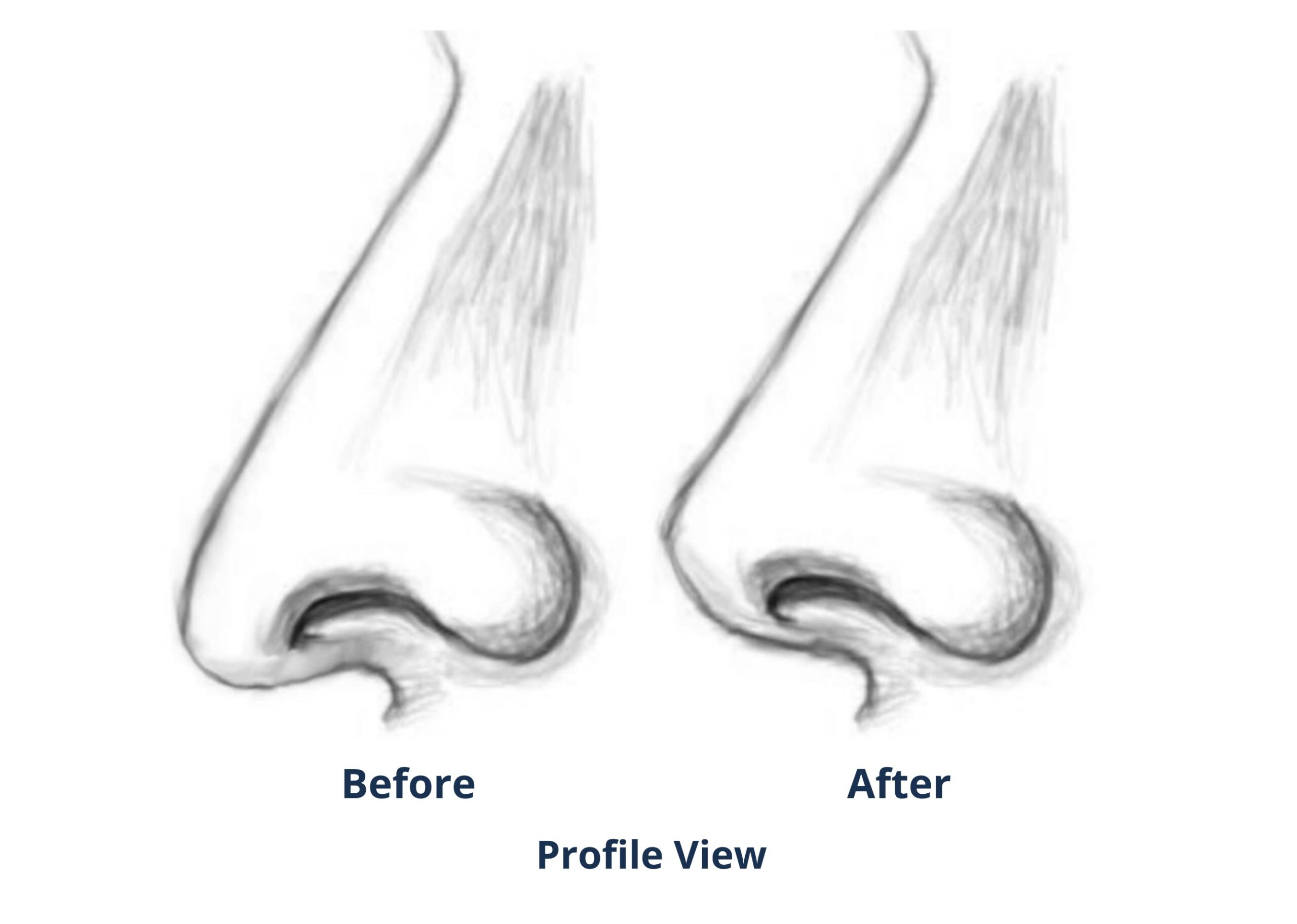
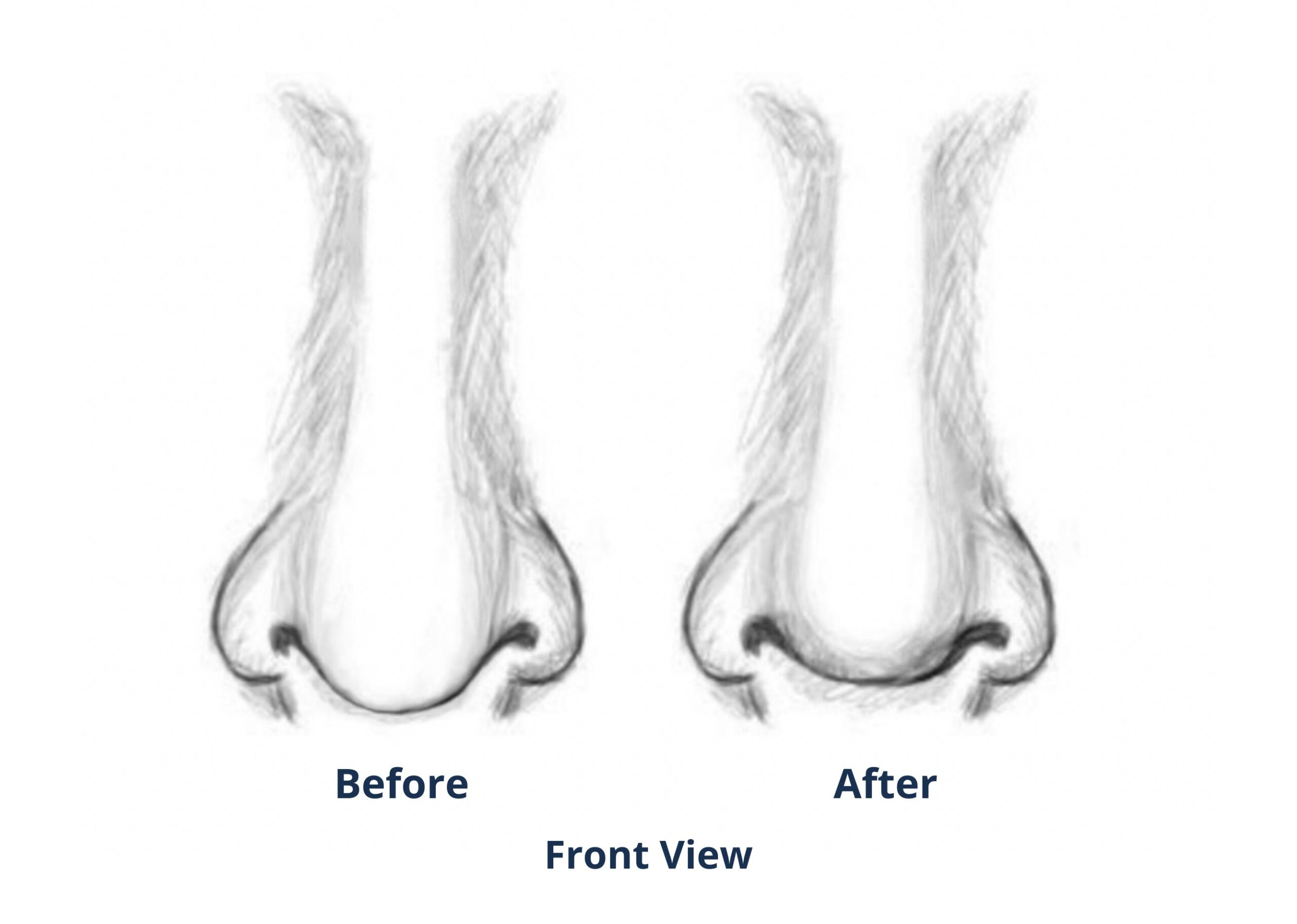
Correction of Drooping Tip
The “hangdown” is typically caused by a nasal septum, the divider between the right and left nasal passages being “too long”, when measured from the top of the bridge to the lip. That septum is shaved down, at its lowest point, allowing the tip to automatically rise up. This is done through a hidden incision just beyond the nostrils.
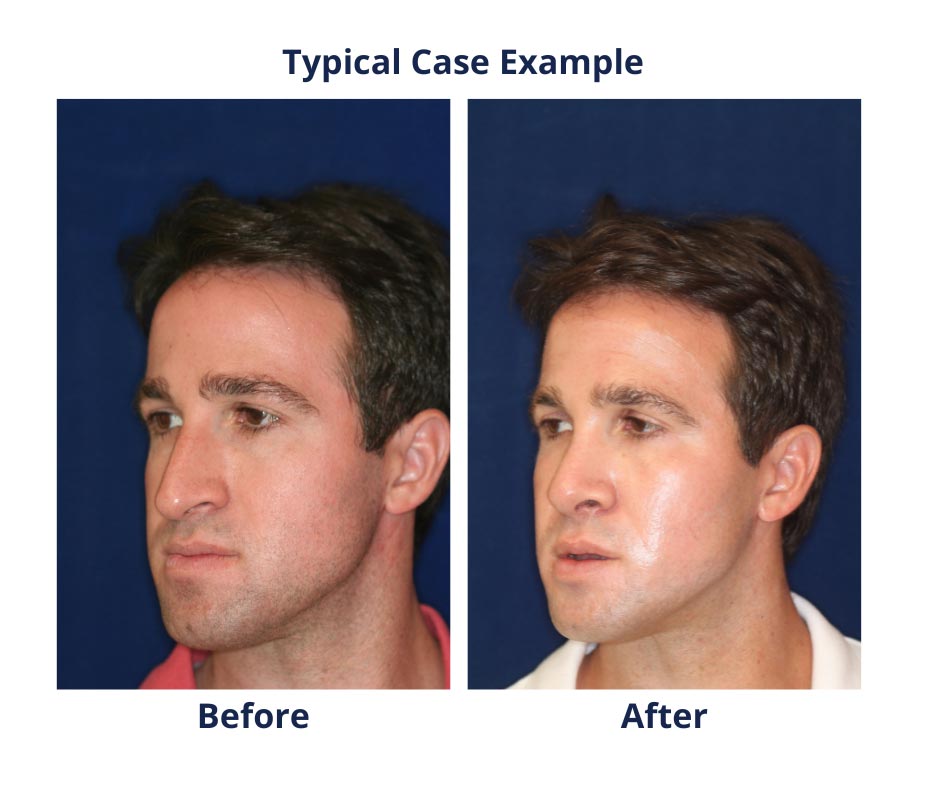
4. Abnormally Wide Nostril Floor or Sill
Describes the unsatisfactory width of the base of the nostril where the nose meets the top of the upper lip.
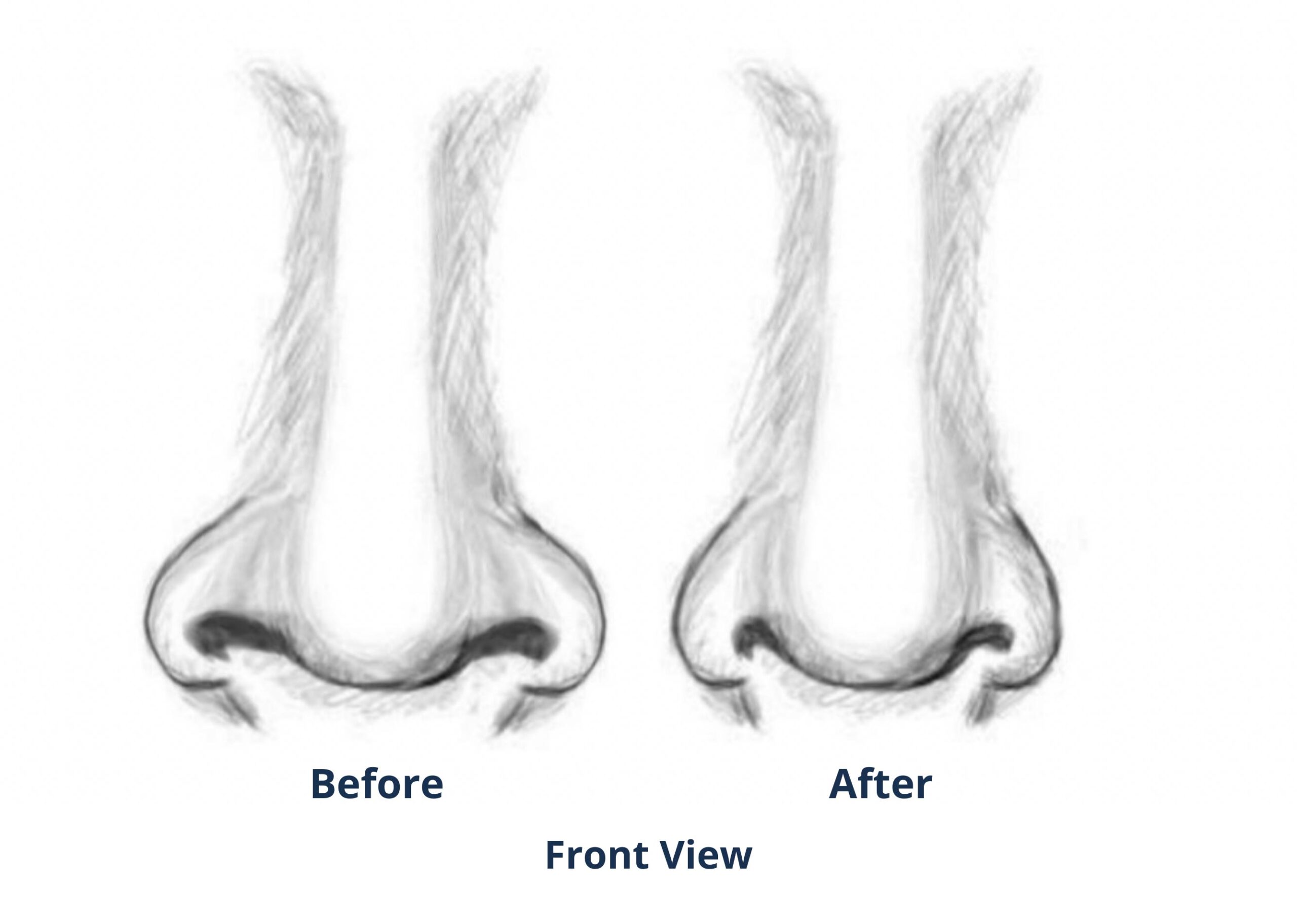
Correction of Wide Nostril Base
Most common in Asian patients. A wedge of skin at the very bottom of the nostril is removed. This draws the wall of the alar or wing closer to the midline. When properly performed, the incision is well-hidden and therefore barely visible.
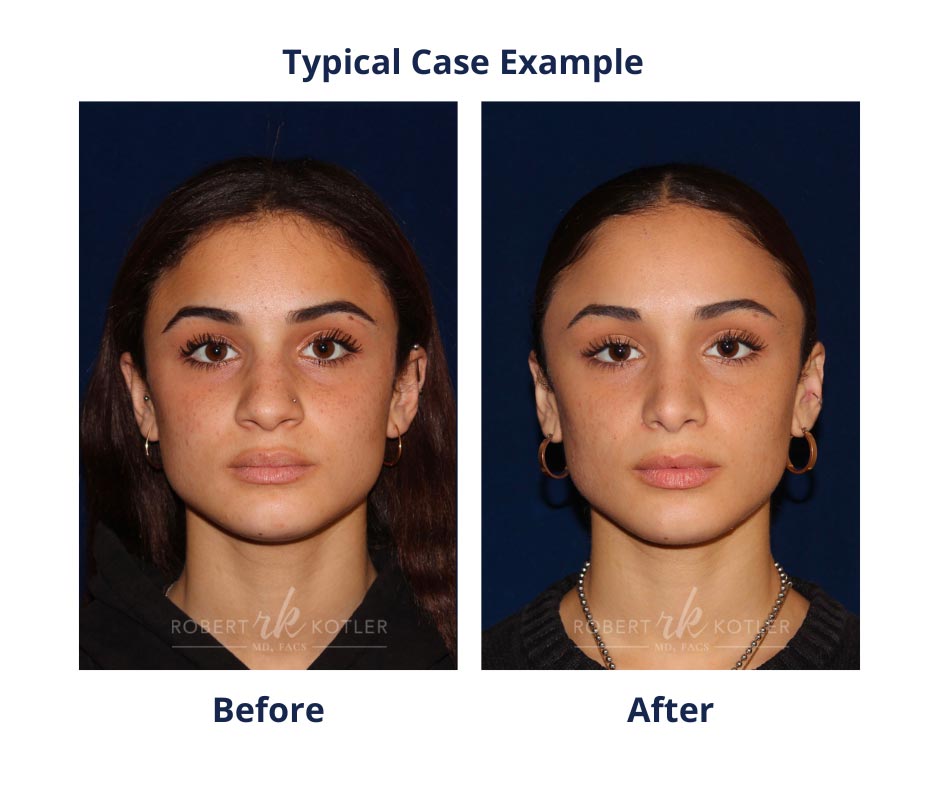
5. Tip Depresses With Smile
The Depressor Septi muscle, when overactive, will pull the tip down with smile.
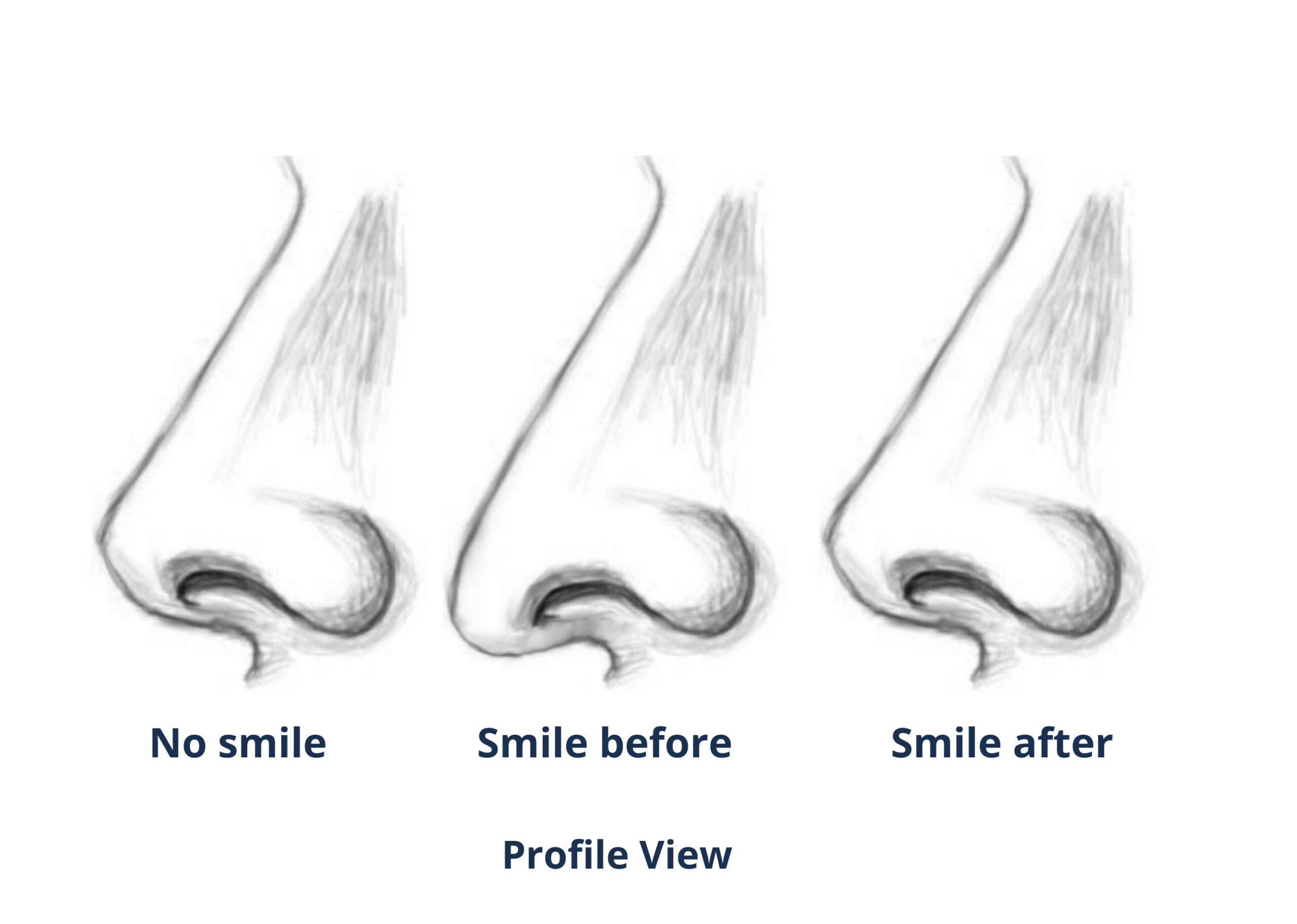
Correction of Tip Drooping With Smile
The muscle action effectively elongates the nose, and drops it down closer to the red portion of the lip. Is a factor in “my nose is getting longer/larger with age”. Can be corrected via the internal Closed Rhinoplasty technique.
